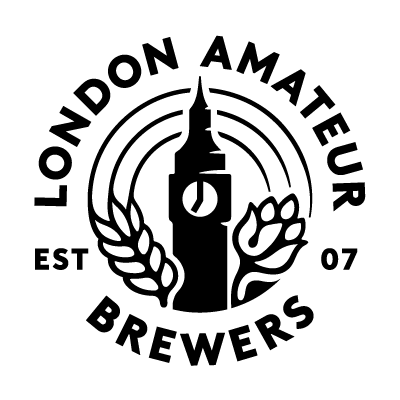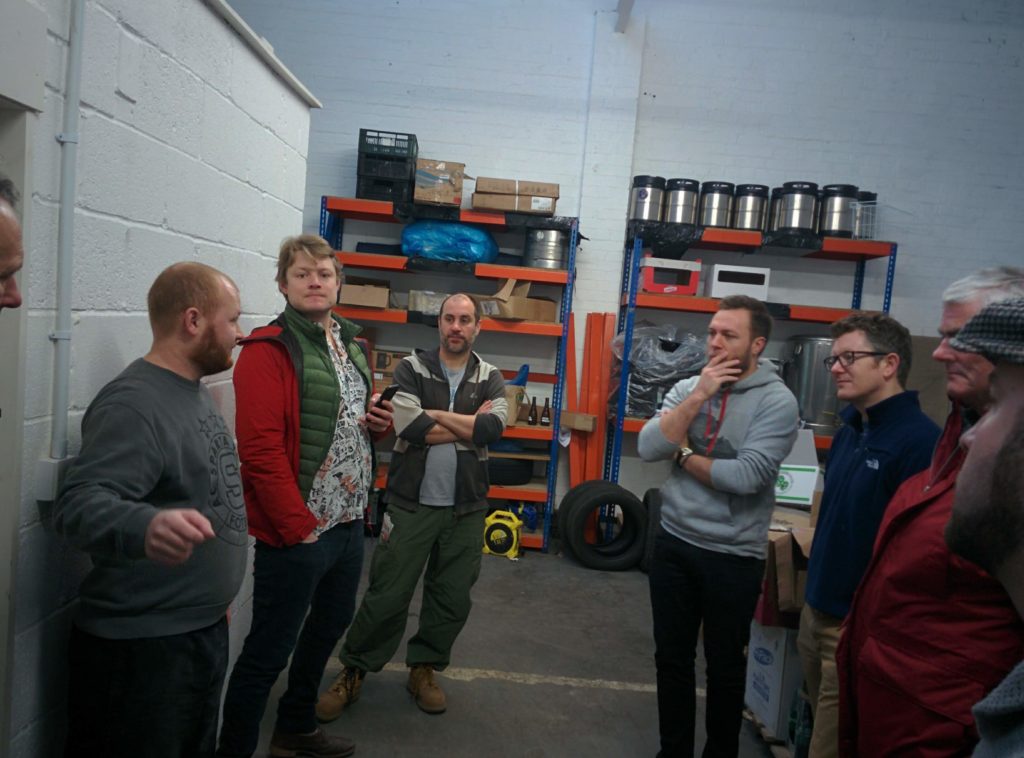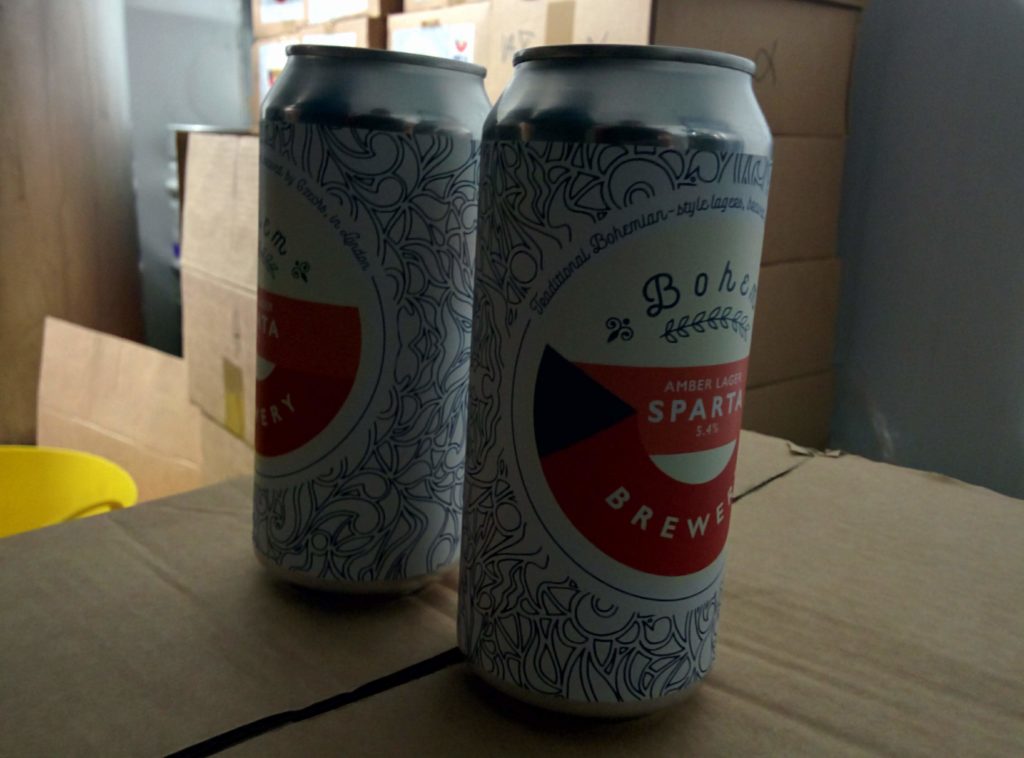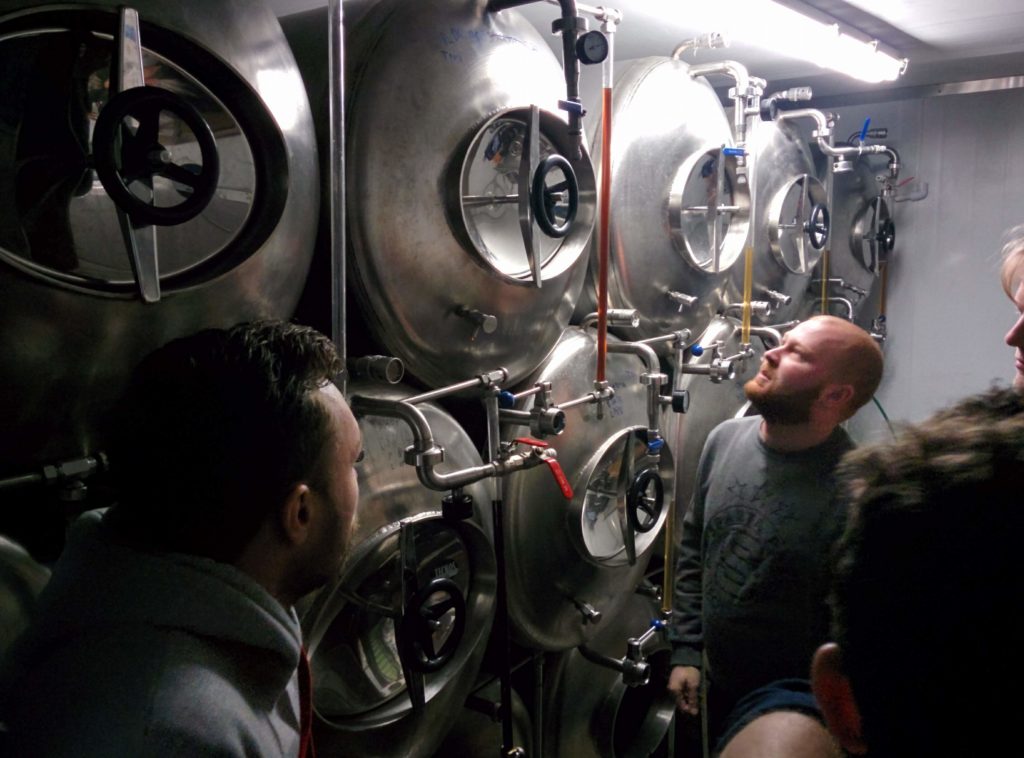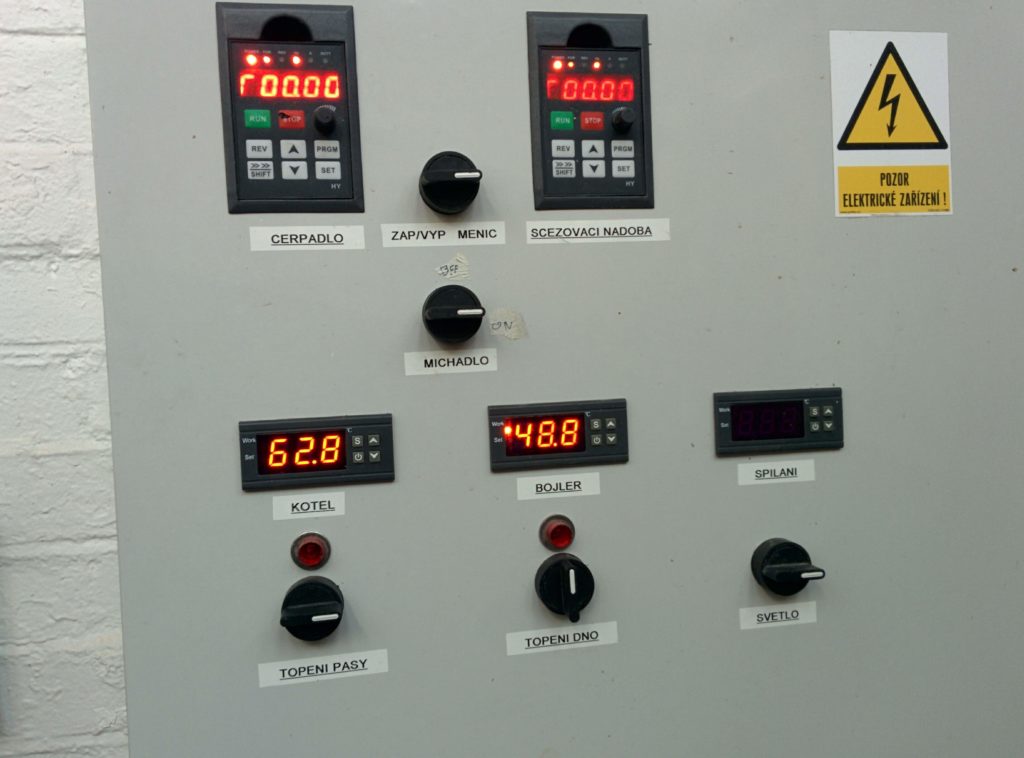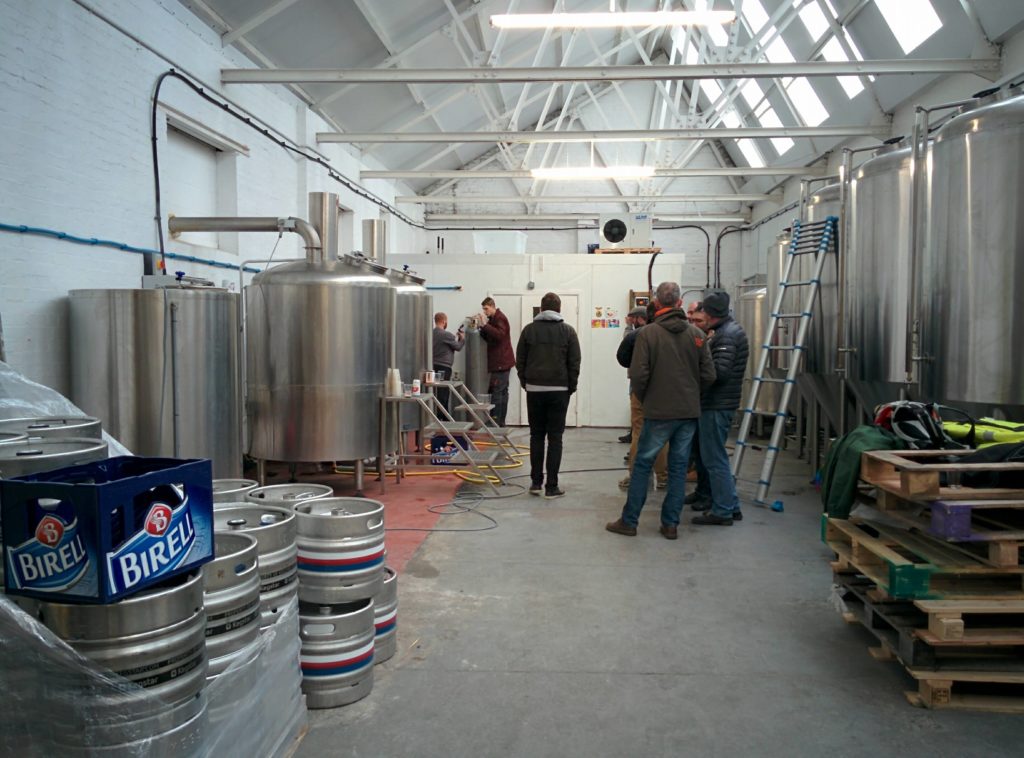LAB Report
–
February
Proceedings of the meeting of the London Amateur Brewers on Thursday 7th February at The Barrel Project
News and Announcements
Combining February and January news (since, three months in, I’ve already missed a month) there was a great deal of exciting developments in the London, and wider, homebrew world.
BJCP Judges
Last October, nine LAB members sat the daunting BJCP taste exam at Beer Merchants Tap in Hackney Wick.

The beers set for the judgement of our judging were an interesting mix of interesting, familiar, challenging and obscure:
- Weissbier – Aldi’s Rheinbacher
- Blonde Ale – Kona’s Big Wave
- Trappist Single – Homebrew, doctored with DMS
- Oatmeal Stout – Guinness Foreign Export, masquerading as an Oatmeal Stout
- Old Ale – Homebrew
- Doppelbock – Paulaner Salvator
We’re very pleased to announce that all the LAB members who sat this exam passed, and have been inducted into the august halls of BJCP judgedom at the level of Recognised, or higher. Congratulations to everyone who sat the exam, and may none of the beers you judge contain butyric acid!
We’re also pleased to announce that there has been a strong demand to re-run the training course that lead to this exemplary success and this will be starting soon, with monthly meetings held at Brew Club in Hackney, starting in March. If you’re interested in the course, please contact the club via the contact page.
Bohem Brewery trip
In January, members from LAB and Hertford Brewers made the trip to Tottenham to visit Bohem Brewery, originally founded by Czech natives Petr and Zdenek in Bounds Green in 2017. As most Czechs seem to, these guys take lager seriously and, as such, they’re one of the few breweries in the UK to use a traditional decoction mash.
A decoction mash, in homebrew terms at least, generally involves taking around a third of the wet grain from the mash and carefully boiling it in a pan on the stove, before putting it back in to the mash. This can be repeated, generally up to three times. There’s a fair bit of debate in homebrew circles as to the utility and worth of decoction, and the prevailing opinion has seemed to be that it’s something to do for historical, or traditional, purposes and doesn’t give you anything a bit of melanoidin malt wont give you. That consensus seems to be shifting, though, through the work of breweries like Bohem, beer historians like Ron Pattinson and Andreas Krennmair, and with a number of decocted beers winning prestigious homebrew competitions like BrewCon.
So, while decoction mashing may be complicated yet explicable on the homebrew scale, how on Earth can a commercial scale brewery do it? Do they have to climb into a hot mash tun and dig it out into a huge pan? How do they avoid scorching the grain? Determined to find out, we took the early train to Northumberland Park
The answer was as fascinating as it was unexpected! In the vast majority of breweries of my experience, the mash is done by mixing the grain with hot water and leaving it, as much as possible, to settle and rest… maybe some careful mixing with rakes in some of the more technologically kitted-out places, but generally some effort is taken to not disturb the grain too much. Quite the opposite here!
The mash is stirred up with big spinning paddles in order to keep the grain in constant suspension. This is the opposite of what most breweries are aiming for, and the reason becomes clear when it’s time to boil the decoction.
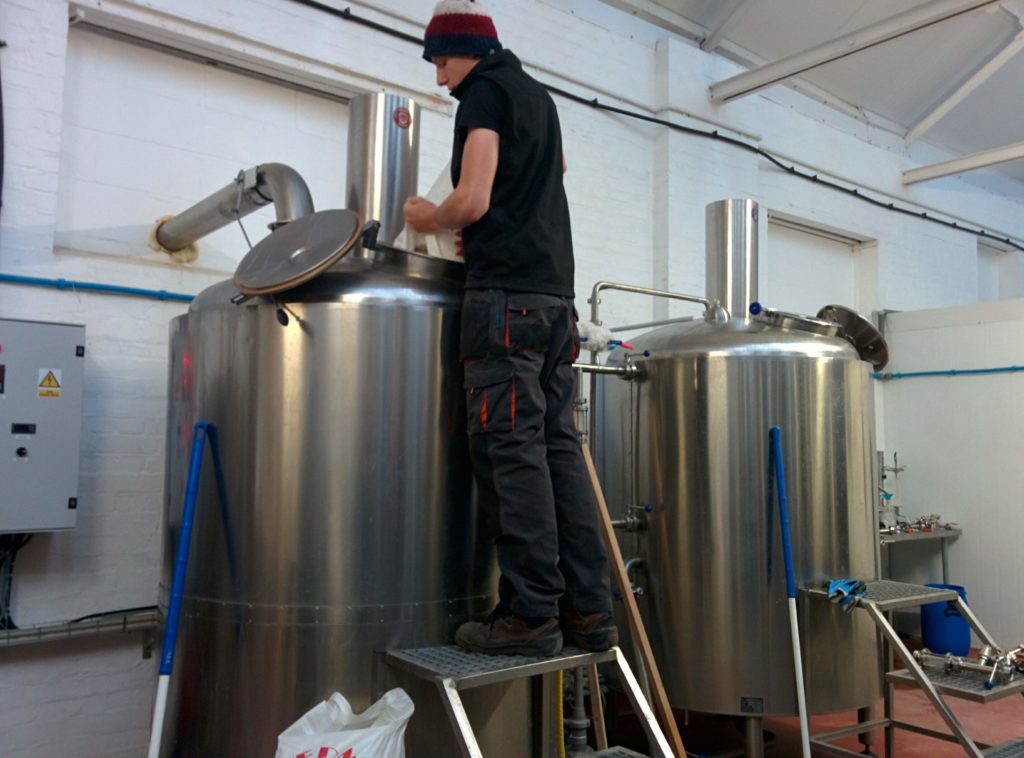
Two thirds of the fluid, agitated mash is pumped into the tun on the right, where it is kept warm. Meanwhile, the remainder is brought to a boil in the first tun. After a short boil, the mash is recombined in the first vessel. On this particular day, the brew then went straight to sparging, but the process is sometimes repeated twice more, to give a triple decoction.
Extensive sampling at the brewery gave us the chance to see exactly what impact this type of mash has on the finished beer, and we can all now confidently say the difference is there, and it’s good! Whether you can’t achieve the same results in different ways remains an open question, but it seems fairly clear that decoction is a useful, and valuable, tool.
This was an excellent, highly enjoyable and very informative trip, and I’d like to heartily thank Bohem, and especially Petr, for their very kind and generous hospitality. We look forward to visiting again when the taproom is open!
Peckhamfest at Brick Brewery
Recent years have seen the nascent growth of a new sort of homebrew competition. Building on the success of very enjoyable events like Bexley Festival, ‘Large Volume’ homebrew competitions require entrants to provide more than the usual two or three bottles, generally around 10 litres or more. Rather than the careful, analytic, two person judging associated with BJCP competitions, there’s usually a strong component of public judging, which tends to give a more ‘real-world’, less style-focused judgment. Simply put, the best beer is the one people like best! More than anything, though, these events are almost always a highly enjoyable day… sharing beer, chatting to people, getting feedback (almost always overwhelmingly positive feedback) straight from the people enjoying your beer!
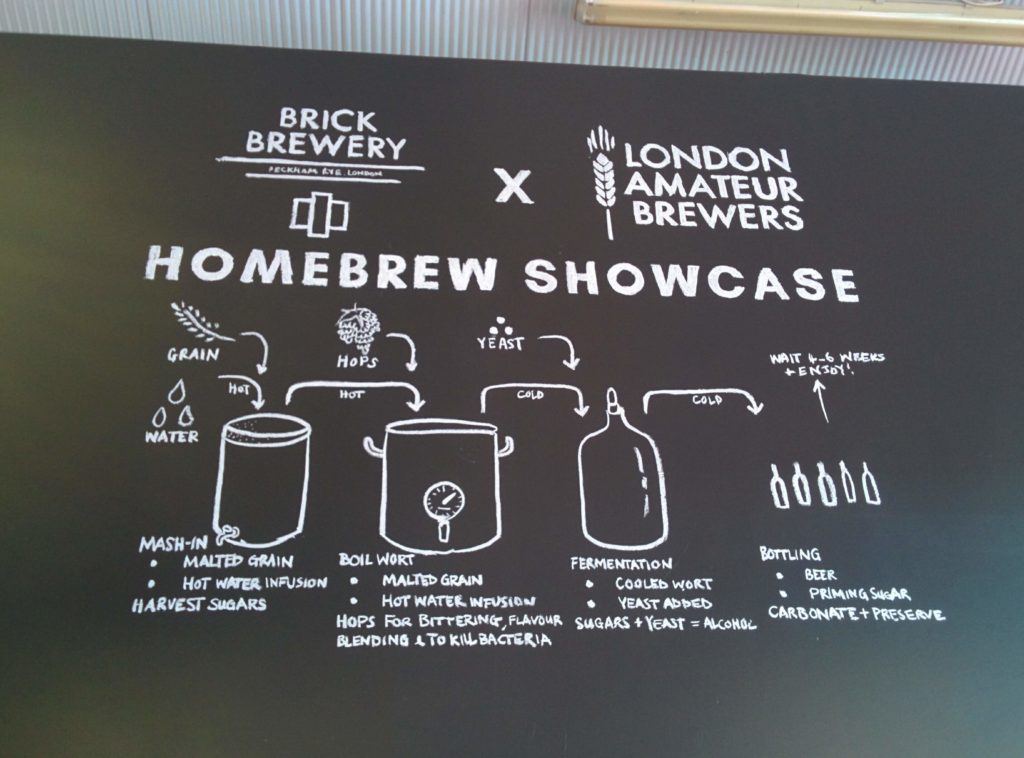
Last year in September, LAB partnered with Brick Brewery to run a Large Volume homebrew competition in their tap room as part of the Peckham Festival, and it turned out to be an incredibly enjoyable day! Nine entries we served to members of the public, who voted on their favourites.
Based on this resounding success, we’re running the competition again this September and opening it up to all London homebrewers. This year, there will be a list of styles from which brewers can choose, on a first-come first-served basis, so if you’re interested in being part of this brilliant event, look out for imminent announcements and, if you’ve got a favourite style, make sure you nab it early!
Competition News
Lager Than Life
Less than three weeks to go till LAB’s own Lager Than Life competition, celebrating everything good in the world of bottom-fermentation. Entries are now closed, and the system is locked, but please join us on March 9th at Pillars Brewery in Walthamstow, to sample the huge range of lagers submitted (every BJCP lager category except American Lite Lager, and Eisbock, I believe), have a few beers and watch the England vs Italy game!
LAB Open
This year’s iteration of the UK’s largest homebrew competition and festival returns in May with a new name! LAB Open has all the judging, tasting, sharing, demos, presentations and prizes you loved about LSECBC, just without the rather clunky, slightly misleading name! Entry registration is now open, and is initially limited to two entries per entrant.
Club Successes
The results have arrived from the National Homebrew Competition with commendable speed!
Once again, LAB are proud to have been awarded Club of the Year (from an amazing field of 46 clubs), for their collective 11 prizes! These include:
- Ian Cosier
- Festbier – Apres-Festbier
- 2nd Place – Pale Lager & Pilsners
- American Barleywine – Cabin Fever
- 2nd Place – Strong Ales
- Festbier – Apres-Festbier
- Rob Gallagher
- Czech Dark Lager – Kafka’s Dark Prognosis
- 3rd Place – Amber and Dark Lager
- Wee Heavy – Hume’s Heavy Induction
- Honourable Mention – Strong Ales
- Czech Dark Lager – Kafka’s Dark Prognosis
- Mark Sanderson
- English Golden Ale – Cat’s Cradle
- 3rd Place – Pale Ale
- Rauchbier – Rauch
- 2nd Place – Wood Aged & Smoke
- English Golden Ale – Cat’s Cradle
- Dave Strachan
- American IPA – IPA
- 1st Place – IPA
- American IPA – IPA
- Richard Clibborn
- English Porter – Huffin’ Puffin’ Porter
- 2nd Place – Porter
- English Porter – Huffin’ Puffin’ Porter
- Lee Immins
- Foreign Extra Stout – Space Monkey Stout
- 3rd Place – Stout
- Wood Aged Beer – Not as Good as Fraser Withers’
- 3rd Place – Wood Aged & Smoke
- Foreign Extra Stout – Space Monkey Stout
- Mark Charlwood
- Experimental Beer – Nolo
- 3rd Place – Speciality
- Experimental Beer – Nolo
Congratulations to all!
Presentations
In January and February we have been looking at some of the vagaries of taste and perception, and how we quantify, qualify and communicate what we experience. This is obviously of critical importance to our collaborative work as brewers, judges and educators, but it sometimes doesn’t get the explicit focus it deserves. While BJCP judging scoresheets are, and will remain, a very important tool in assessing and describing beer, there are other methods that are sometimes more useful and we used these meetings to introduce members to two of them.
Sensory Analysis sheet
Sometimes, you’re not particularly concerned about how much a beer fits a particular style, or whether certain flavours are a flaw, you just want to assess which particular flavours are detectable, and what levels they present at. This is particularly important if you’re trying to assess what impact a particular ingredient or process might have on the finished beer.
In this introduction, we also assessed what impact our preconceptions can have on how we perceive flavour. Two identical pale, hoppy lagers were prepared, and one was dosed with flavourless Sinamar colouring to give it a deep brown-amber colour.
Although the number of participants, and the conditions of the trial, were insufficient to draw any strong conclusions, it’s interesting to note on the chart below that people seemed to perceive (marginally) more Dark Chocolate, Dark Caramel, Hazelnut and Raisin character in the darker beer, which, some would say, are precisely the flavours you might expect to find in a beer of that colour.
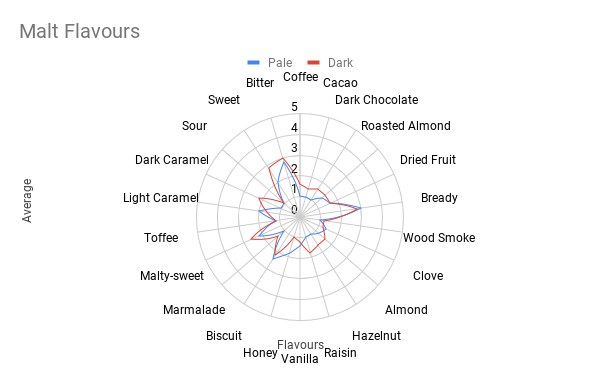
Triangle Tests
The people at Brulosophy have rightly become feted heroes of the homebrew world, and their weapon of choice has always been the triangle test. Although the impact of their tests are endlessly debated, the triangle test remains, to my knowledge, the best way of determining if there is a detectable difference between two beers.
Essentially, three differently coloured cups are presented to the participant. Two contain the same beer and one is different, and the participant must decide which is the odd-one-out. Statistical tests on the results can then tell us how certain we can be that there is a perceivable difference between the two beers.
There has always been something of a debate, though, about how (for want of a better word) difficult triangle tests are. Often, results will show no significant difference between two ingredients or processes that we’re just sure must produce a noticeable difference, and it’s sometimes said that the nature of triangle tests masks small, but perceptible differences.
With that in mind, we chose two commercial beers for this trial-run that are ostensibly the same style, but that almost everyone would be confidant of telling apart, namely Carling Black Label and Guinness Hophouse 13.
The results barely warrant even the most cursory statistical analysis! Of 25 participants, 24 chose the correct beer, which seems to result in a statistical confidence almost too high to measure… I genuinely thought there may be some doubt creep in, but that is literally almost as certain as you can get!
As a practice, it was an interesting activity to do, and as a baseline, we can at least say that triangle tests can definitely tell apart two moderately similar beers.
An interesting footnote, though… Even though virtually everyone could tell the beer apart, the preference was fairly evenly split between Carling, Hophouse, and No preference.
Next Meeting
After a short search for a new venue, we have found a brilliant place at the Barrel Project, in Druid Street, Bermondsey. Not only, that, but we’ve also found enthusiastic and imaginative new partners, in the people at London Beer Factory!
We’ll be working together to run two monthly meetings: one, our traditional LAB-style meetings, where we focus on analysis, investigation, development, education and training; and one more relaxed, fun, chilled out, social meeting where people can get together to share stories, beer and advice, as well as learning to brew on LBF’s homebrew-scale kit at the Barrel Project.
For March, we’ll run these meetings back to back. The LAB meeting on Monday 4th March and the LAB-LBF Brew Evening on Tuesday 5th March, but in the future we’ll space them out.
As always, everyone is more than welcome to attend any of our meetings, but if you (or someone you know) has always wanted to give homebrewing a go, but didn’t know where to start, then the Brew Evening should be the perfect no-pressure chance to give it a go!
Hope to see you there!
